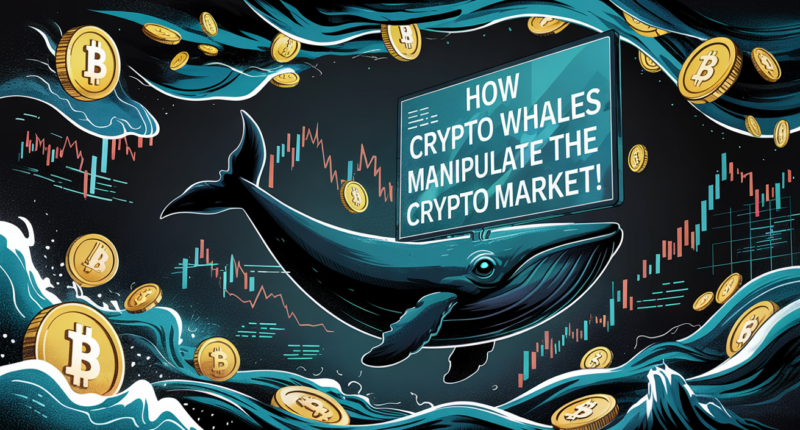What Are Crypto Whales?

Crypto whales are very large cryptocurrency holders who control a substantial share of a coin’s supply. Consequently, when they trade even a small part of their holdings, prices can move sharply. For example, research notes that whales often hold assets for long periods (limiting supply) and then cause big price swings when they finally sell or buy. This makes crypto markets more volatile.
How Whales Move the Market
Whales move prices by trading large volumes. When a whale sells a huge amount, it can flood the market and spark panic. Conversely, when a whale buys a lot, it often pushes prices higher as others follow. One report explains that “when whales buy large quantities, prices can surge… When whales sell, panic can spread, pushing prices down”. In short, whale trades tend to create sudden spikes or crashes.
Common Whale Tactics
Whales sometimes use tricks to influence other traders. For example, they may use spoofing: placing big fake orders to trick the market, then canceling them before execution. They might also do stop-loss hunting, rapidly selling to trigger smaller traders’ automatic sell orders and force prices down. Additionally, whales often coordinate in private groups to pump a token’s price and then dump it for profit. As a result, following whale activity can help explain sudden price swings.
Recent Whale Market Moves
Bitcoin Whale Rotation
In one recent case, a long-time Bitcoin holder known as a “Bitcoin OG” made a dramatic move. In September 2025 he deposited 1,176 BTC (~$136M) to an exchange, restarting a large sell program after swapping 35,991 BTC for 886,371 ETH (~$4B)cryptonews.com. That large sell order around $116,000 helped drive Bitcoin down. In fact, coordinated selling by this whale and others sent Bitcoin from about $115K to $111K in a few hours.
Dogecoin Profit-Taking
Similarly, whales have moved meme coins. For example, on October 8, 2025, Dogecoin briefly hit $0.26 but then “large wallets began offloading their positions… leading to a rapid price decline to $0.25”. This shows whales took profits and caused a short-term dip. Interestingly, even after selling at that peak, whales continued accumulating Doge – adding roughly 30 million DOGE, a sign they remained confident in the coincoincentral.com.
Ethereum Accumulation
In contrast, whales can also buy the dip. In April 2025 top Ethereum wallets added over 130,000 ETH as the price fell below $1,800cryptobriefing.com. This huge purchase likely stabilized Ether’s price after a steep decline. It shows that whales influence markets both down and up.
What This Means for Investors
Overall, whale activity adds risk for small traders. Sudden crashes or rallies are often caused by one big trade, not news. Therefore, investors should be cautious and perhaps watch large transfers on tools like WhaleAlert. In short, because whales hold so much, their moves can trigger big swingsphiladelphiafed.org.









